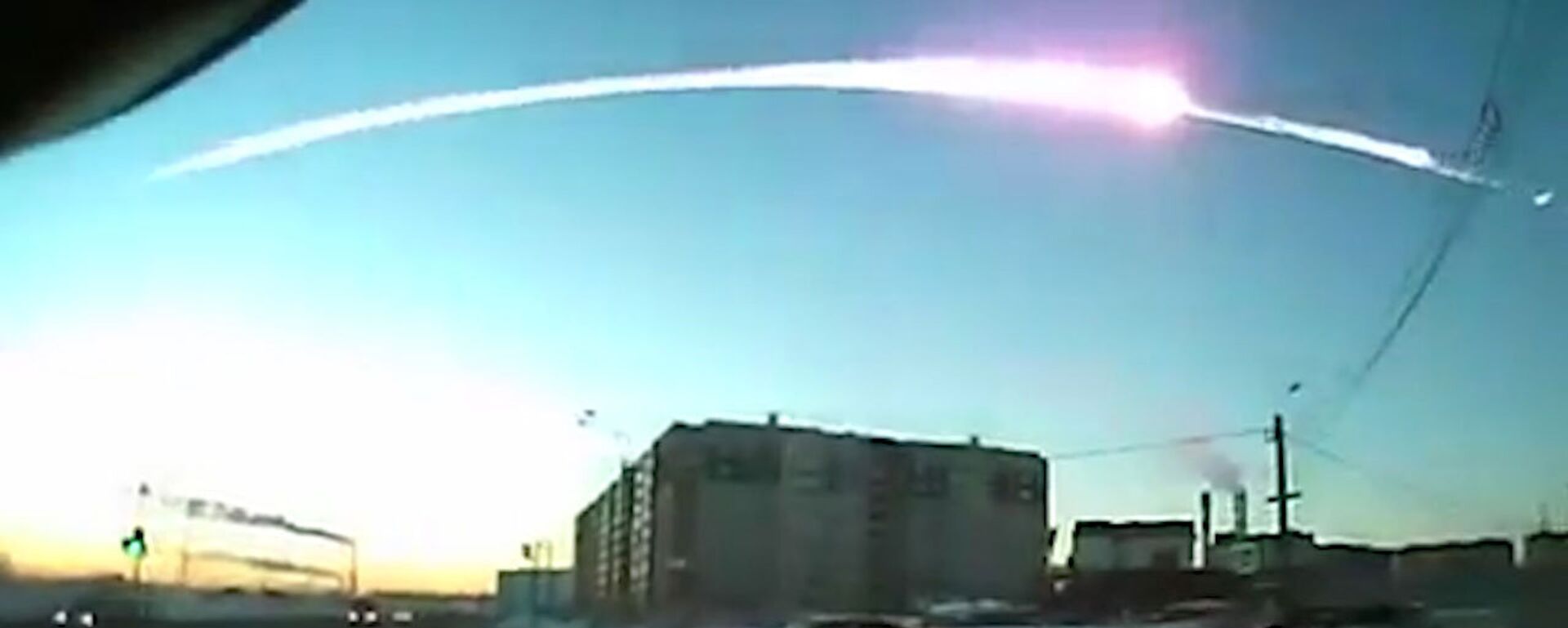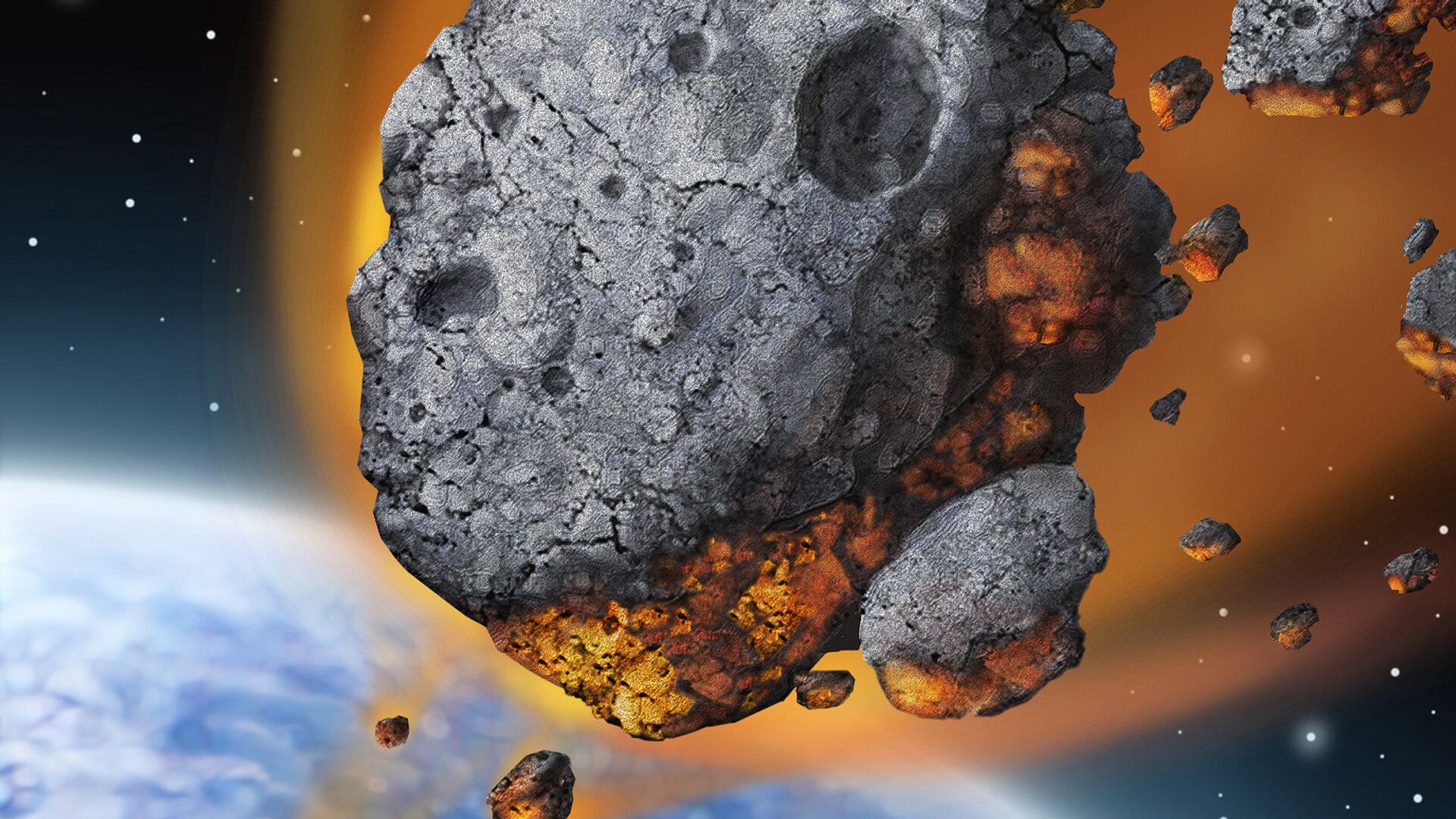https://sputnikglobe.com/20220410/data-from-us-space-command-suggests-interstellar-object-reached-earth-years-ago---media-1094646557.html
Data From US Space Command Suggests Interstellar Object Reached Earth Years Ago - Media
Data From US Space Command Suggests Interstellar Object Reached Earth Years Ago - Media
Sputnik International
The meteor exploded in the sky near Papua New Guinea in 2014, and possibly ended up depositing “interstellar debris” in the ocean. 10.04.2022, Sputnik International
2022-04-10T15:05+0000
2022-04-10T15:05+0000
2022-11-03T19:33+0000
science & tech
meteor
study
interstellar
earth
https://cdn1.img.sputnikglobe.com/img/106151/25/1061512589_0:592:1537:1456_1920x0_80_0_0_48091c6998693820509c0f0398f4ac78.jpg
Material originating from beyond the reaches of our solar system may be resting on the bottom of the Pacific Ocean after a meteor that arrived from another star system brought it there, Vice’s Motherboard reports, citing a memo by the US Space Command.According to the media outlet, the meteor exploded in the sky near Papua New Guinea back in January 2014, and it is possible that it “sprinkled interstellar debris” into the ocean."I get a kick out of just thinking about the fact that we have interstellar material that was delivered to Earth, and we know where it is," said Amir Siraj, a theoretical astrophysicist at Harvard University who in 2019 co-authored a study together with Avi Loeb, who serves as Frank B. Baird, Jr. Professor of Science at Harvard University, suggesting that the object in question might have been a meteor of interstellar origin.While the attention of Siraj and Loeb was drawn to the meteor by the fact that its speed, which exceeded 130,000 miles per hour, suggested "a possible origin from the deep interior of a planetary system or a star in the thick disk of the Milky Way galaxy".Yet when the researchers submitted their discovery to The Astrophysical Journal Letters, "the study became snarled during the review process by missing information withheld from the CNEOS database by the US government", as the media outlet put it, as some of the sensors responsible for detecting asteroids are operated by the US Department of Defense.Now, a newly released memo by the US Space Command, dated 1 March, reveals that Joel Mozer, Chief Scientist of Space Operations Command, “confirmed that the velocity estimate reported to NASA is sufficiently accurate to indicate an interstellar trajectory”, thus lending credence to the researchers’ hypothesis.
https://sputnikglobe.com/20220225/study-finds-possible-connection-between-chelyabinsk-meteor-and-moons-formation-1093379646.html
earth
Sputnik International
feedback@sputniknews.com
+74956456601
MIA „Rossiya Segodnya“
2022
News
en_EN
Sputnik International
feedback@sputniknews.com
+74956456601
MIA „Rossiya Segodnya“
Sputnik International
feedback@sputniknews.com
+74956456601
MIA „Rossiya Segodnya“
science & tech, meteor, study, interstellar, earth
science & tech, meteor, study, interstellar, earth
Data From US Space Command Suggests Interstellar Object Reached Earth Years Ago - Media
15:05 GMT 10.04.2022 (Updated: 19:33 GMT 03.11.2022) The meteor exploded in the sky near Papua New Guinea in 2014, and possibly ended up depositing “interstellar debris” in the ocean.
Material originating from beyond the reaches of our solar system may be resting on the bottom of the Pacific Ocean after a meteor that arrived from another star system brought it there, Vice’s Motherboard reports, citing a memo by the US Space Command.
According to the media outlet, the meteor exploded in the sky near Papua New Guinea back in January 2014, and it is possible that it “sprinkled interstellar debris” into the ocean.
"I get a kick out of just thinking about the fact that we have interstellar material that was delivered to Earth, and we know where it is," said Amir Siraj, a theoretical astrophysicist at Harvard University who in 2019 co-authored a study together with Avi Loeb, who serves as Frank B. Baird, Jr. Professor of Science at Harvard University, suggesting that the object in question might have been a meteor of interstellar origin.
"One thing that I'm going to be checking—and I'm already talking to people about—is whether it is possible to search the ocean floor off the coast of Papua New Guinea and see if we can get any fragments," Siraj added.
While the attention of Siraj and Loeb was drawn to the meteor by the fact that its speed, which exceeded 130,000 miles per hour, suggested "a possible origin from the deep interior of a planetary system or a star in the thick disk of the Milky Way galaxy".

25 February 2022, 22:53 GMT
Yet when the researchers submitted their discovery to The Astrophysical Journal Letters, "the study became snarled during the review process by missing information withheld from the CNEOS database by the US government", as the media outlet put it, as some of the sensors responsible for detecting asteroids are operated by the US Department of Defense.
Now, a newly released memo by the US Space Command, dated 1 March, reveals that Joel Mozer, Chief Scientist of Space Operations Command, “confirmed that the velocity estimate reported to NASA is sufficiently accurate to indicate an interstellar trajectory”, thus lending credence to the researchers’ hypothesis.


